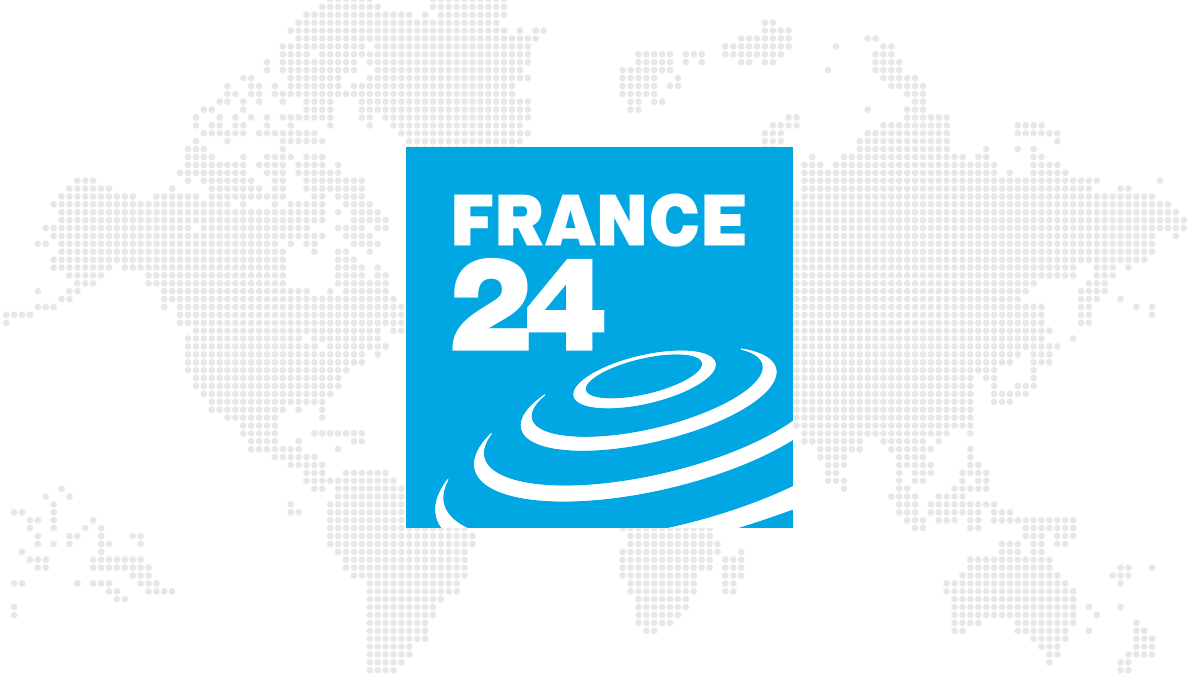Gabes (Tunisia) (AFP)
At dawn, the inhabitants of Gabès, in southern Tunisia, rush to buy a drink or a bottle of legmi. This date sap, a local pride, is too delicate to keep for sale elsewhere than the edge of the oasis.
In Gabes, a proverb says that "even if the legmi attracts mosquitoes, people continue to clump around."
Highly appreciated during the fast month of Ramadan because of its high sugar content, the legmi is mainly consumed from March to October and is often used as breakfast.
Typical of the Saharan oases, this drink also exists in other latitudes. In the Spanish archipelago of the Canary Islands, it is so called "guarapo".
At seven o'clock in the morning, at the Ain Slam roundabout in Gabes, bicycles, cars and military vehicles park in a merry mess around three men seated on plastic chairs, next to their cans filled with precious juice.
Akram gets there on foot. "We were born with the legmi: my grandfather and my father produced some, my one-and-a-half-year-old daughter has already drunk and I even wrote a song on it," said this thirty-year-old laughing.
"The legmi is part of our identity, it's something rare, it's a gift," said Haithem, another nectar lover. "It's not science, it's friendship and art."
- "After God, the palm tree" -
You must have the expert hand and not be too greedy to extract the sap of the palm tree without killing the tree.
Perched on the top of a palm tree about eight meters high, with a cigarette on his lips, Ridha Omrane Moussa carefully cuts the bark.
This sexagenarian, nicknamed "the prince of the palm tree" according to him, acquired from one of his ancestors the technique of cutting and extraction of sap. He has been collecting it since he was 14 years old in the Gabesian oasis of Nahal.
"He who does not love the palm is not Gabesian, after God there is the palm tree," he exclaims.
To carry out his daily extraction, he climbs barefoot, with no help other than the notches he made on the trunk.
The objective of the cut is to provoke a reaction of the tree which makes up its sap. "You must not touch the heart of the palm tree, otherwise it dies," said Ridha Omrane Moussa, who produces about 8,000 liters of legmi per year.
He owns 25 palm trees, but each exploits them for two and a half years before leaving them to rest for a period of four years.
At the roundabout Ain Slam, the bottle of a liter and a half of legmi sells about 2.5 dinars (0.80 euro).
In addition to the fresh legmi, also called legmi "alive", there is a fermented and therefore alcoholic version, the legmi says "dead".
This beverage is particularly popular with teenagers, says Haithem. "They do not have much money to be drunk, so (they) pay a dinar (about 30 cents) and (they) have legmi dead, but it's not good at all."
At their age, he himself prepared with his friends his alcohol from fresh legmi. "We let him ferment for four or five hours" in an oasis hut, recalls this thirty.
"Every day, we did a test, we added herbs, mint ... Until today, we do not know which one was the best, because nobody agreed. good memories".
- "Forever" -
The preservation of the "living" legmi is complex, as it turns quickly to vinegar. Bottles of frozen water are placed in the can where the sap flows during the night, then it is immediately frozen before being poured into a container at the time of sale.
This fragile cold chain strongly limits the consumption of legmi. "Even in Sfax (140 km further north), there is none," said Haithem. "It remained organic, without any chemicals or ingredients for preservation".
For the inhabitants, this fragility is beneficial because it prevents the demand from widening, which would inevitably happen according to them if it could be transported and sold further from the oases.
"If there is a lot of demand, what will happen? They will cut a lot of palm trees and we risk losing the oases," worries Haithem.
Another danger lurks: "The chemical pollution of the factories is a threat to the oases," says Moussa.
The oases in Gabès, including the seaside one - the only one of its kind in the Mediterranean - are threatened by the activities of the Tunisian Chemical Group (GCT), a public company that has been operating phosphate mines since the 1970s to produce which has already been questioned for the risks it poses to these precious vegetation zones.
The GCT pours thousands of tons of phosphogypsum, a toxic waste, and phosphoric acid into the natural environment every day.
But the succession is assured. "I learned the work from my son so that this tradition stays in Gabes forever," says Moussa, who remains confident.
© 2019 AFP

